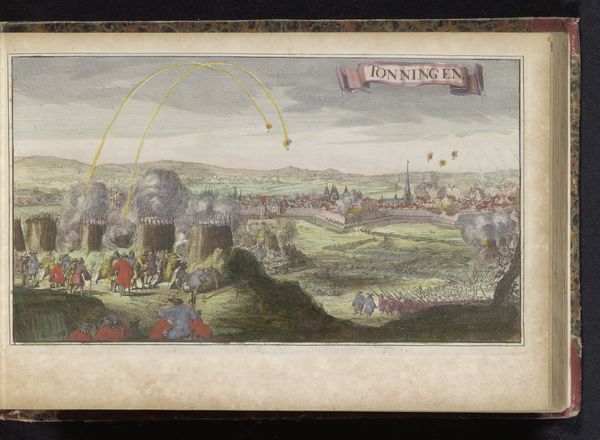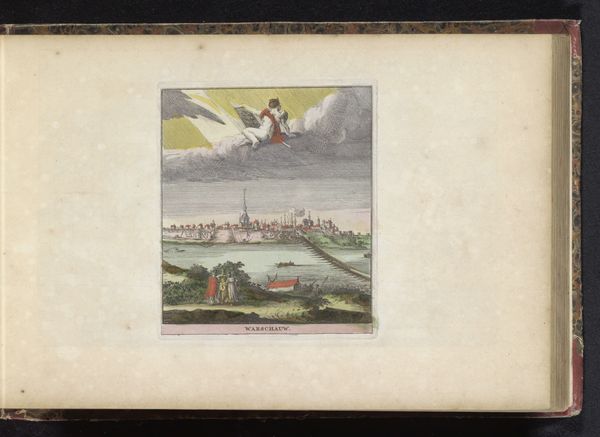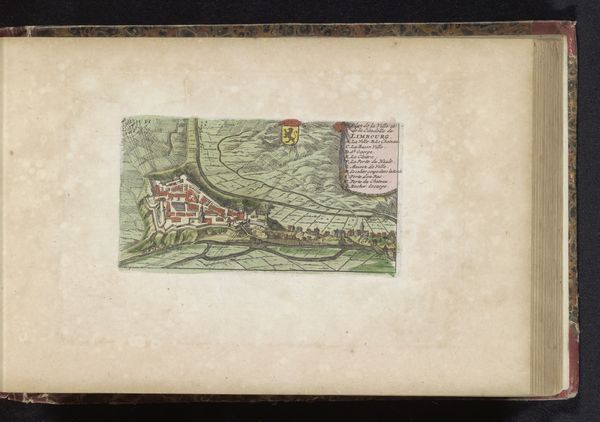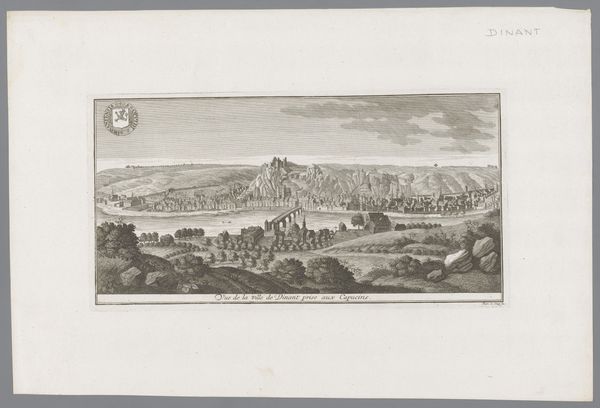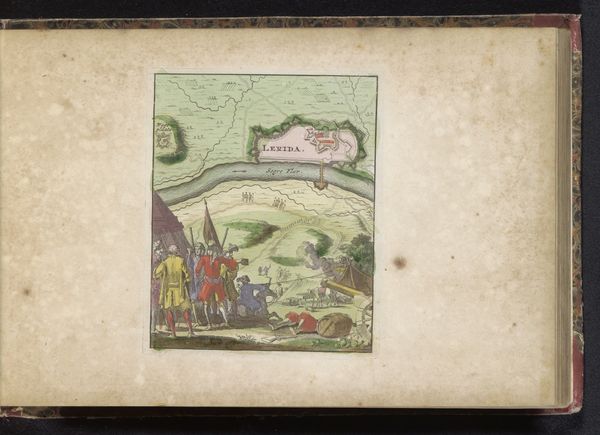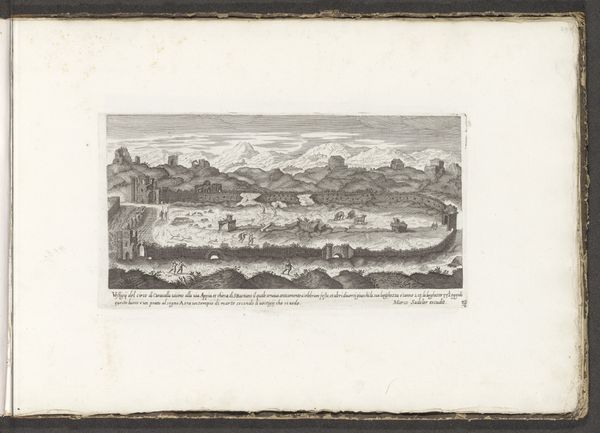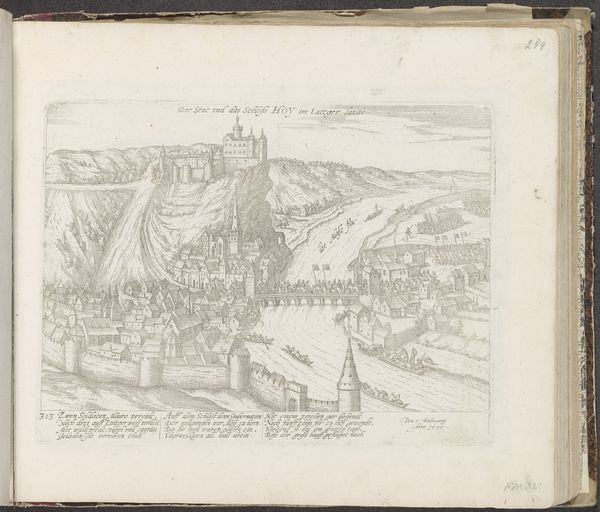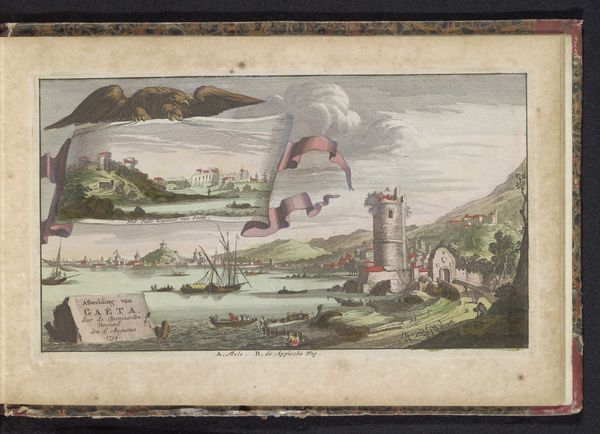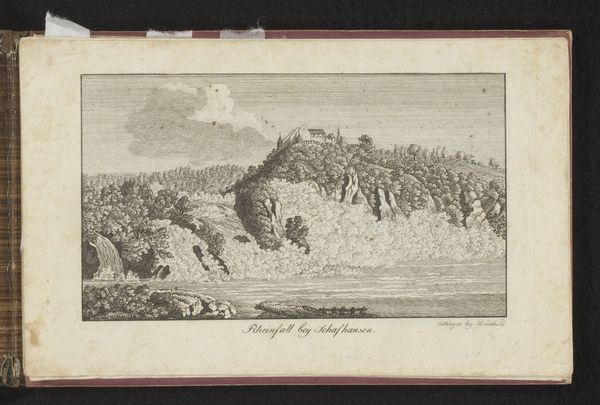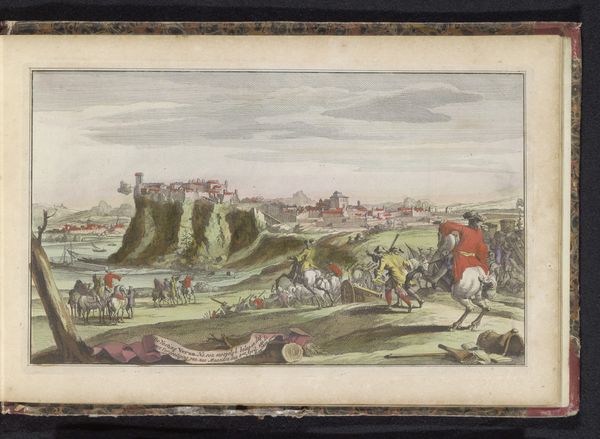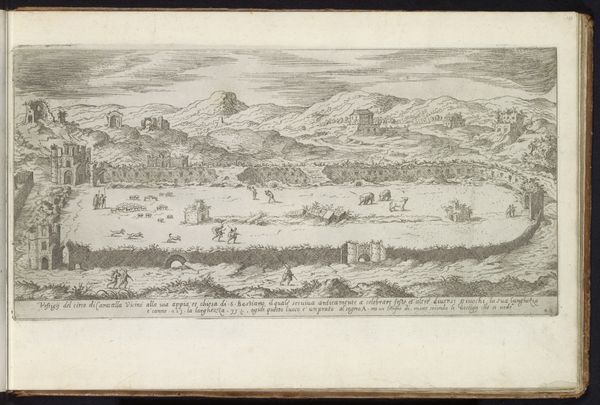
print, etching
#
water colours
#
baroque
# print
#
etching
#
landscape
#
oil painting
#
cityscape
#
watercolor
Dimensions: height 161 mm, width 261 mm
Copyright: Rijks Museum: Open Domain
Curator: What an interesting depiction—sort of hushed and observing. Editor: Yes, it feels quite serene, almost detached, in a way that allows us to simply be there and contemplate. What are we looking at exactly? Curator: This is “Gezicht op Derbent,” which translates to "View of Derbent." It’s an etching with watercolours, dating back to 1735. Derbent, for context, is a city in Dagestan, Russia, and it sits on the western shore of the Caspian Sea. Editor: Etching and watercolor! I see those fine lines and soft washes blending together. Tell me, what’s catching your eye formally? Mine’s the serpentine, almost architectural wall snaking along. Curator: That wall! For me, it really directs the gaze, segmenting the landscape into almost theatrical planes. You have the foreground figures, that almost miniature city laid out behind, then this monumental mountain towering in the background...It feels like history unfolding in layers, wouldn’t you agree? Editor: Absolutely! It reads as an elaborate statement on constructed boundaries. How those imposed geometries interact with, or interrupt, the flow of nature! That jagged peak feels indifferent to our human scrawls. What story do you think the artist is trying to tell? Curator: Perhaps of human ambition set against timeless geology. It also speaks to the 18th-century obsession with capturing, categorizing, the world—like a botanical illustration of a city. It aims for something objective, and the baroque landscape leans into emotion in ways that clash nicely. Editor: The strategic high angle further emphasizes that impulse to document. It almost seems the figures in the foreground are staging an assessment. Curator: And the use of watercolor helps in lending that air of ephemeral beauty… almost romanticizing that stark vision of conquest and border. In a weird way, the delicate washes help capture a mood more than any objective data about the architecture or place itself. Editor: It’s fascinating how such a structured depiction can elicit such pensive observations on something as historically complex as geopolitical assertion. The print invites us to linger, which might be the point. Curator: Definitely. And it subtly nudges you to confront all these big issues as if in private, inside your own experience of art-making or just plain reflecting about your mood for the day! A fine accomplishment from someone who chose to remain, simply, anonymous.
Comments
No comments
Be the first to comment and join the conversation on the ultimate creative platform.

